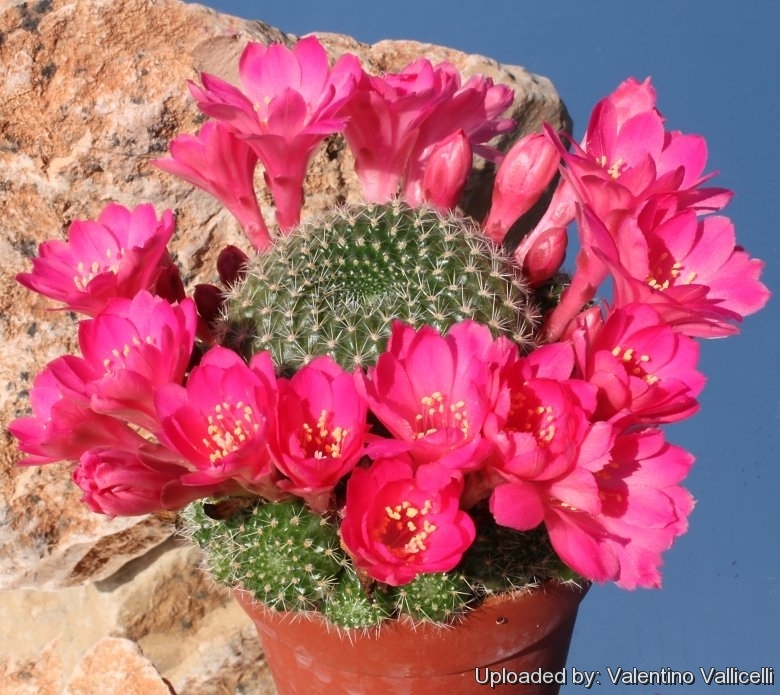
Rebutia hybrid marsoneri x senilis Photo by: Valentino Vallicelli
Origin and Habitat: Garden origin (Nursery produced cultivar)
Synonyms:
Description: Rebutia hybrid marsoneri x senilisSN|15395]]SN|17790]] is a nice cross between Rebutia marsoneriSN|897]]SN|897]] and Rebutia senilisSN|17790]]SN|15395]]. It usually shows a body shape similar to that of the mother plant and shows some interesting intermediate features of both the parents.
Habit: It is a clumping globular cactus, 4-6(-7) cm in diameter and 4-6(-10) cm tall. It can grow clumps 10-15 cm wide.
Stem: Depressed globose, light green to dark green with gray scales, that begins to offset in about its third or fourth year, eventually making a moderately tight clump, with the individual stems standing out a little on their own.
Tubercles: Low, rounded in two downward spirals, in ratio 8:13.
Areoles Small, round, brownish.
Spines: Variable, very thin, short bristle-like, flexible to somewhat stout, brownish to golden yellow to white, usually with dark tips, 3-15 mm long.
Flowers: Usually pink, but also yellow, orange or red, 3,5-4,5 cm long, 3-3,5 cm in diameter.
Blooming season: It is usually one of the earliest rebutias to flower in spring.
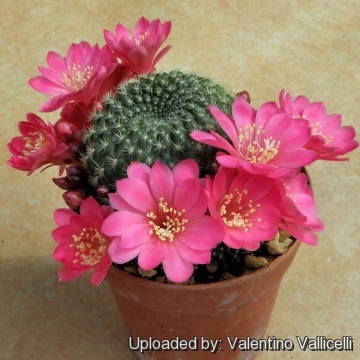 Rebutia hybrid marsoneri x senilis Photo by: Valentino Vallicelli
Rebutia hybrid marsoneri x senilis Photo by: Valentino Vallicelli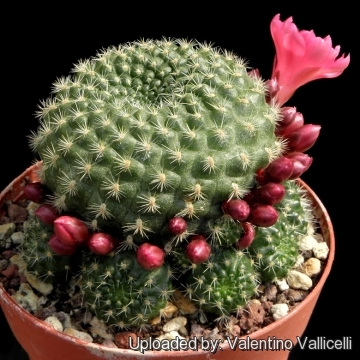 Rebutia hybrid marsoneri x senilis Photo by: Valentino Vallicelli
Rebutia hybrid marsoneri x senilis Photo by: Valentino Vallicelli Rebutia hybrid marsoneri x senilis Photo by: Valentino Vallicelli
Rebutia hybrid marsoneri x senilis Photo by: Valentino Vallicelli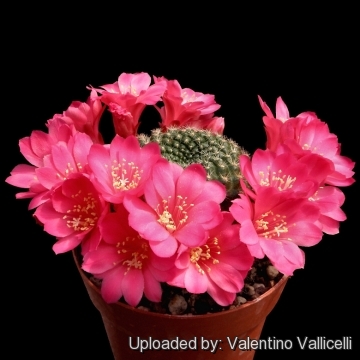 Rebutia hybrid marsoneri x senilis Photo by: Valentino Vallicelli
Rebutia hybrid marsoneri x senilis Photo by: Valentino Vallicelli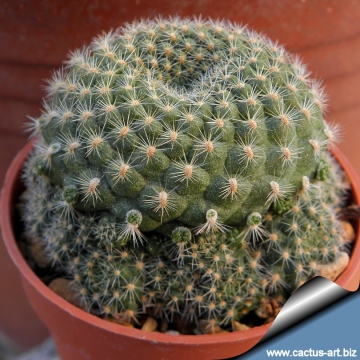 Rebutia hybrid marsoneri x senilis Photo by: Cactus Art
Rebutia hybrid marsoneri x senilis Photo by: Cactus ArtSend a photo of this plant.The gallery now contains thousands of pictures, however it is possible to do even more. We are, of course, seeking photos of species not yet shown in the gallery but not only that, we are also looking for better pictures than those already present.
Read More... Cultivation and Propagation: It loves a very permeable, coarse mineral soil as well as to be strictly kept dry throughout the winter quiescent period since it is sensitive to any moisture excesses, To prevent rottenness it is also advisable to surround its root neck by very rough sand or grit, this help a fast water drainage and an appropriate air circulation.
For its sensitive roots this species is frequently grafted to avoid root problems.
Watering Needs: Water moderately in the growing season, keep dry during the winter rest
Frost Tolerance: Plants are and quite frost hardy -5 (-15)° C but prefeably overwinter in a cool place (at 0/10°C) this is important for the flowers as well as for plants health. Without this cool winter period they normally wont get any buds.
Sun Exposure: Needs a full sun exposure ( light shadow my be useful in the hottest summer days)
Propagation: Seed, cutting, grafting.















